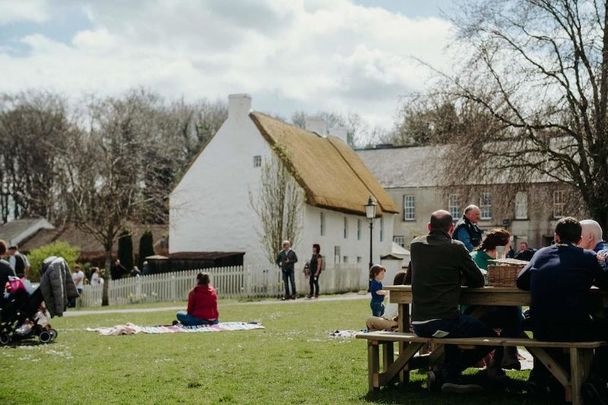An ancient tomb that is older than the Egyptian pyramids has been put on display at the Ulster Folk Museum in County Down.
The 6,000-year-old court tomb, which dates back to the Neolithic era, was discovered at Ballintaggart, in County Armagh, and moved from its original location in 1966 due to the risk of destruction by the expansion of a neighboring quarry.
The tomb was installed at the Ulster Museum and remained on display until 2006 when it was placed into storage while the museum embarked on a three-year renovation project. It remained in storage at the museum until it was acquired by the Ulster Folk Museum, in Holywood, County Down, this year.
National Museums NI conducted a consultation with stakeholders regarding the future of the Ballintaggart court tomb in 2019, eventually deciding that the Ulster Folk Museum was the best place for its reconstruction.
National Museums Northern Ireland (NI) based its decision on the potential for linking Ulster’s archaeological heritage with the folk history represented at the museum.
William Blair, director of collections at National Museums NI, said the organization was delighted to reconstruct the court tomb at the Ulster Folk Museum.
"It is a brilliant illustration of how the museum can connect Ulster's unique heritage spanning thousands of years to the present day. We are grateful to our project partners for their input and support," Blair said in a statement.
Tomb older than the pyramids secures new home at Ulster Folk Museum https://t.co/5TkFbZbDlT
— Irish Examiner (@irishexaminer) September 25, 2023
There are more than 400 ancient court tombs in Ireland, with most of them located in the northern part of the island.
Dr Greer Ramsey, curator of archaeology at National Museums NI, said the tombs became more prevalent when people began to live in more permanent settlements.
"The Neolithic period, to which they belong, was revolutionary as it marked the end to a nomadic or hunter-gatherer way of life," Ramsey said.
"New settlers arrived about 6,000 years ago, bringing with them farming skills and many of the plants and domestic animals we are familiar with today.
"With a more secure food supply, people could live for longer in one place and invest in larger, more permanent structures, such as tombs."
Ramsey also said that court tombs took their name from a semi-circular arc of upright stones that marked the entrance to burial chambers.




Comments